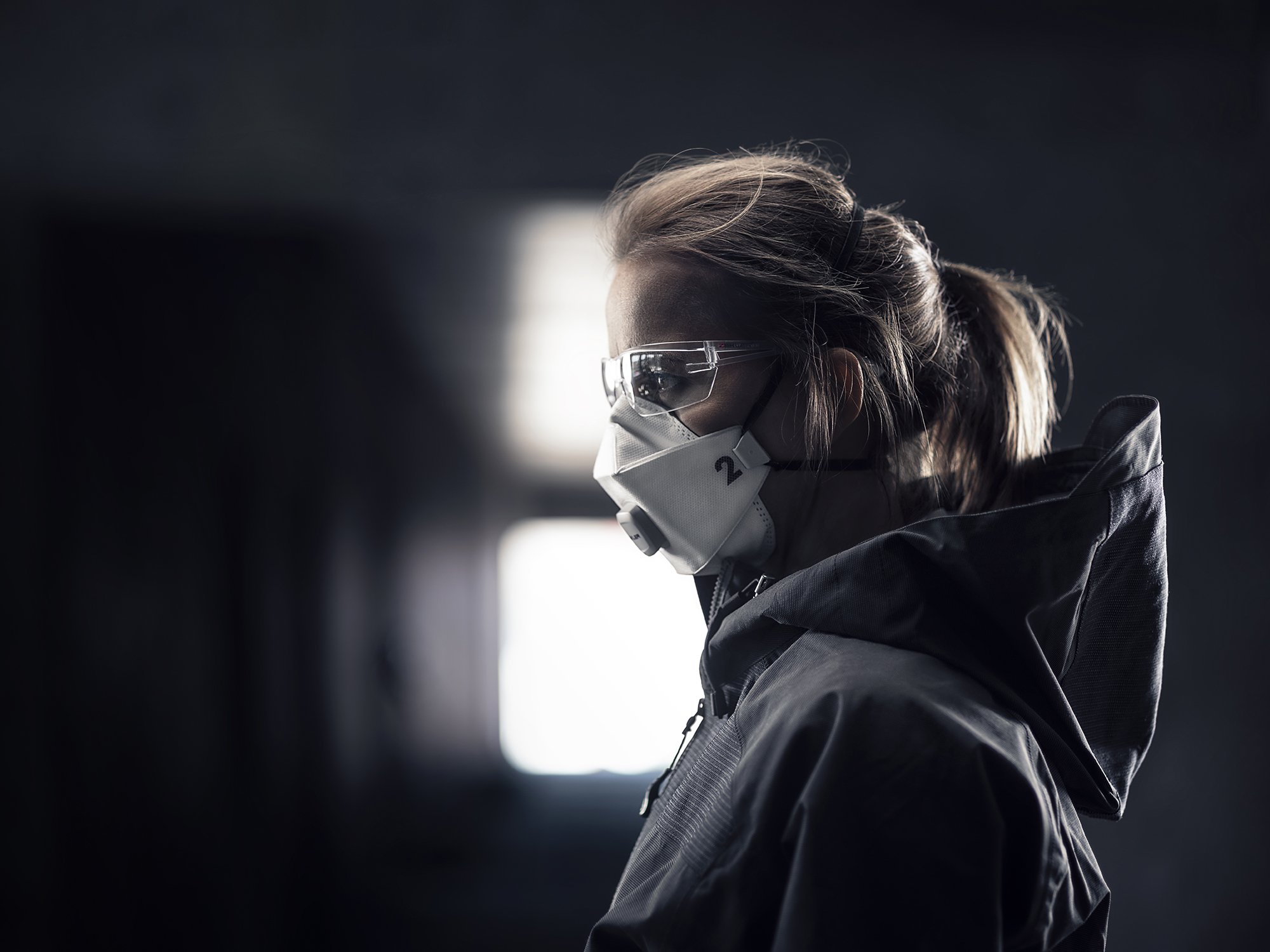FREQUENTLY ASKED QUESTIONS ABOUT RESPIRATORY PROTECTION
Understand common questions and answers about respiratory protection with our guide. Learn the importance of high-quality filtering half masks, how they work, and how to ensure a perfect fit. Our FAQ answers common questions about usage, features, and differences between protection classes FFP2 and FFP3. This is your guide to protecting your breathing in the work environment.
Respiratory protection shields your lungs from harmful airborne particles that can cause serious, sometimes lifelong, or even fatal diseases.
A high-quality mask has effective filter material that captures and retains particles while keeping breathing resistance very low. Additionally, the mask offers a fit that ensures it sits tightly and comfortably. Our latest series, Zekler 1500, is a respiratory protection product that we highly recommend. Click HERE to read more.
Filtering half masks use high-efficiency filter material to capture harmful particles from inhaled air, while exhaled air passes through the filter material or an exhalation valve.
No, beards or stubble prevent the respiratory protection from sealing tightly against the face, significantly reducing the protection efficiency.
The valve on a filtering half mask facilitates exhalation by reducing heat and moisture buildup inside the mask. This lowers breathing resistance, enhancing user comfort, especially during extended use or in warm work environments. The valve helps keep the mask drier and more comfortable, but it does not filter the air exhaled by the user. Prioritize a mask with a high-quality valve for the best performance.
A filtering half mask should have a flexible nose seal and woven elastic bands that adjust for perfect placement and fit. This ensures a comfortable, tight, and secure fit. Zekler 1502, 1502V, and 1503V are highly appreciated respiratory protection masks that we warmly recommend. Availiable in two sizes for the best fit!
Protection classes FFP1, FFP2, and FFP3 indicate the mask's filtration efficiency and protection factor, with FFP3 offering the highest level of particle protection.
Filtering half masks FFP2 and FFP3 differ in filtration efficiency and protection level. FFP2 masks filter out at least 94% of airborne particles, while FFP3 masks filter out at least 99%. This means that FFP3 offers higher protection against finer particles, which is particularly important in environments with very high concentrations of harmful particles or where the presence of viruses is significant. The choice between FFP2 and FFP3 depends on the specific risk assessment of the work environment.
The valve on a filtering half mask is designed to facilitate exhalation by reducing the buildup of heat and moisture inside the mask. This lowers breathing resistance, increasing user comfort, especially during extended use or in warm work environments. The valve helps keep the mask drier and more comfortable, but it does not filter the air exhaled by the user. Prioritize a mask with a high-quality valve for the best performance. Read more about Zekler's respiratory protection by CLICKING HERE.
A model with an odor filter has a layer of activated carbon that protects against unpleasant fumes and gases within hygienic limits. Read more about filtering half masks with odor filters by CLICKING HERE.



 Sweden
Sweden Norway
Norway